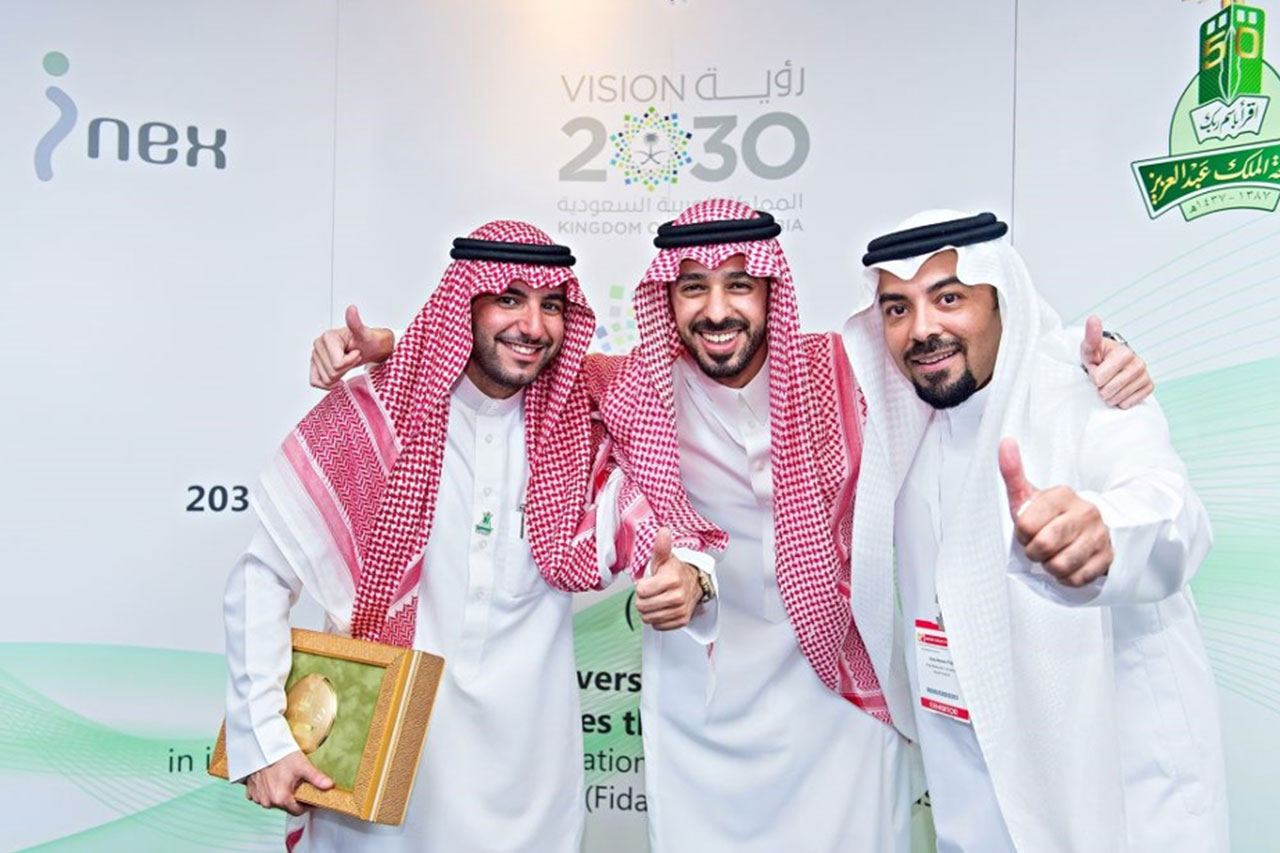They say bullying scars for life, but for one Saudi medical specialist it was early inspiration for a ground-breaking innovation at the sharp end of cartilage reconstruction.
As a schoolboy Dr. Abdul Karim Fida watched bullies tease some of his friends for their protruding ears. Their parents had wanted reconstructive surgery, but it did not exist.
Around the same time, Dr. Fida’s colleague, inventor Meshaal Al-Harasani, was firing the creativity that has since led to more than 50 inventions that meet a variety of social and humanitarian challenges.
A third colleague at the King Abdul Aziz City for Science and Technology (KAUST), Dr Faisal Zaqzouq, made up a trio which spent six years refining their idea for a new cartilage reconstruction device that is taking pain away from cartilage reconstruction for children and adults.
Since the launch of their KAU Rasping Tool, dubbed the “Fida needle”, at the Arab Health Conference and Exhibition in Dubai in early 2017, the trio has won international acclaim and enhanced Saudi Arabia’s innovation reputation.
As with all Innovate4Health stories, intellectual property has been central to the lengthy process of turning an interesting idea into a useful, marketable product that has the potential to address a major global health challenge.
The Problem
Many thousands of people globally undergo surgery for congenital defects of the ear and nose each year. Millions more suffer pain in the knee, hips, elbows, or ankles caused by cartilage damage which, if severe, almost always requires invasive surgery.
Cartilage reconstruction surgery is common, but also painful. There are multiple surgical techniques available, but all involve keyhole access or opening the cartilage and some two or more separate stages. It is uncomfortable and risks damage to surrounding vessels, nerves, or adjacent cartilage.
The Solution
The KAU Rasping Tool is a fine, but sturdy, needle capable of sculpting body cartilage. Its potential is tremendous for sparing people with severe cartilage damage from invasive operations.
A chat in a restaurant in 2012 led to the Saudi trio focusing on redesigning needles. First, they developed a finer needle for aesthetic purposes to repair children’s protruding ears without putting them through a full surgical operation.
“We used Nanotechnology to make a saw-shaped needle that grabs and reshapes the ear cartilage through a very small pinhole, without using an open technique or surgery, and it’s a minimally invasive procedure,”
“We used Nanotechnology to make a saw-shaped needle that grabs and reshapes the ear cartilage through a very small pinhole, without using an open technique or surgery, and it’s a minimally invasive procedure,” says Dr. Fida.
Next, the trio consulted with a leading French manufacturing company on the problem of how to blend high precision, minimal invasion, and the strength to tackle tougher adult cartilages. They were pointed in the direction of Nano laser and Nano technology.
 The new needle was serrated and thick, but also flexible enough to enter under the skin. Dr. Fida told the Center for International Communication: “It works on most cartilages and will enable future non-invasive surgeries in the knee without opening the knee cartilage.”
The new needle was serrated and thick, but also flexible enough to enter under the skin. Dr. Fida told the Center for International Communication: “It works on most cartilages and will enable future non-invasive surgeries in the knee without opening the knee cartilage.”
The team has since designed a bespoke handle for use with the tool.
Innovation and intellectual property
The launch of the KAU Rasping Tool represents the culmination of a six-year journey of innovation discovery and negotiation of prototypes, and patents — crucial for attracting the investment required to take a promising idea through laboratory tests to market.
The trio applied for a global patent a year after their first meeting, waiting two more years to receive it. The patent (№4109) granted by KAUST in the Makkah Province is valid for 20 years.
Modern healthcare research and development typically involves many organisations and individuals, often in different countries. Intellectual property (IP) rights such as patents provide certainty that proprietary knowledge can be safely shared among all parties and across borders during the research and development process.
Here again, the tool broke new ground as the first Saudi-French medical product, with much of the development work taking place in France.
“Our ambition is to give young Saudis a global voice. The new generation is the harbinger of change. With knowledge and creativity anything is possible.”
After proving its effectiveness in European hospitals, it is being produced and distributed by a U.S. company. Now, the Saudi medical team is giving training to hundreds of German and European doctors in the fields of nose, ear, larynx and cosmetic surgery.
The team are flying the flag for Saudi Arabia’s innovation potential. Al-Harasani in particular is a poster boy for a younger generation pushing the boundaries of Saudi Arabia’s innovative ambition toward its Vision 2030 goals. His first invention, at 13, saw him take on a challenge to help people with special needs.
Today, still only in his early 30s, Al-Harsani, has more than 50 inventions and over 20 patents to his name. They include ones to help newborns in hospital and a device designed to produce electricity by absorbing energy from moving cars in the roadway.
Al-Harasani told Arab News, “With Saudi Vision 2030, our country is on its way to the first world. Our government believes in the Saudi youth. We are passionate about developing our country,” he explained.
“Our ambition is to give young Saudis a global voice. The new generation is the harbinger of change. With knowledge and creativity anything is possible.”

